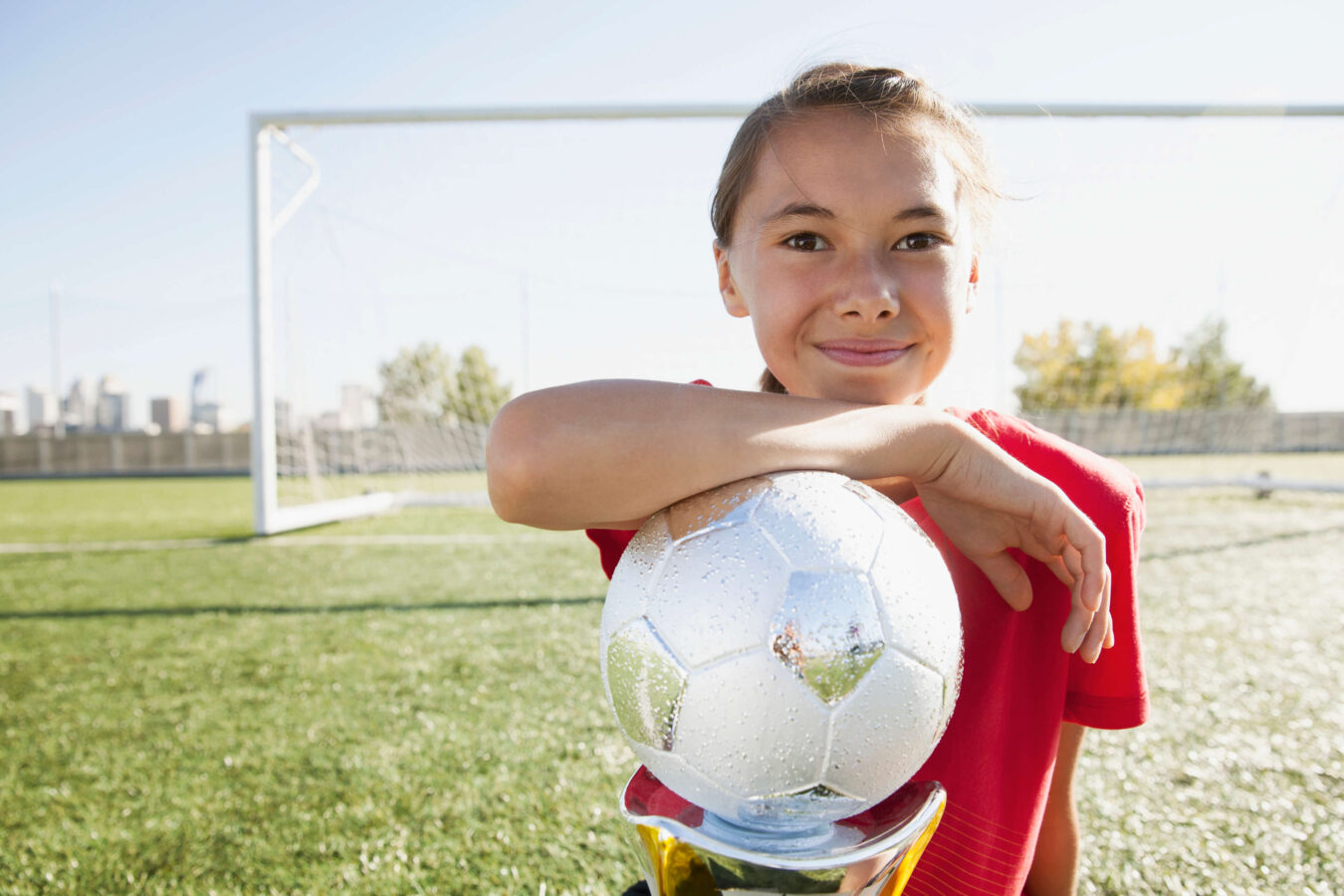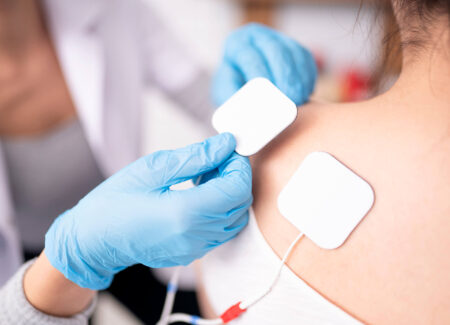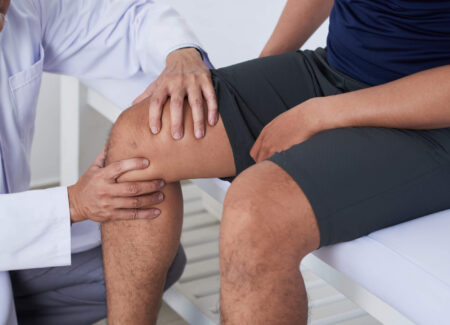
Medically reviewed by Misty Seidenburg
Summer is winding to a close, and for many children and young adults, that means the start of the fall sports season. Whether your child plays for their local recreational team or is part of a high-level college program, it is important to know the risks of common injuries. We’ve compiled our top fall sports injury prevention tips to stay safe, healthy, and injury-free this season.
A study from the CDC found that more than half of children ages 6-17 participate in community or school sports programs. At the college level, more than half a million students play sports, according to the NCAA.
Autumn is an especially busy time of year for child athletes. Popular fall sports in the U.S. include:
Unfortunately, sports injuries are common, particularly among younger children whose bodies are still developing. One-third of all childhood injuries are sports-related. Here are the most common:
A concussion is a traumatic brain injury (TBI) that occurs from a bump, blow, or jolt to the head or body that causes the brain to shift within the skull. This sudden movement causes chemical changes in the brain that manifest as physical and cognitive symptoms. They are common in football and soccer.
A sprain is a stretching or tearing of the ligaments, or tissues that connect bones together at a joint. They can occur from direct physical trauma to the body, or from unnatural twisting or bending in the body.
Strains are injuries to muscles or tendons, which are the fibrous tissues that connect muscles to bones. They range in severity from mild overstretching to full and complete tears that may require surgical repair.
The anterior cruciate ligament (ACL) located in the center of the knee connects the upper thigh bone to the shinbone. ACL injuries are common in sports like soccer, field hockey, football, and tennis that require frequent starts, stops, and pivoting.
The medial collateral ligament (MCL) on the inside of the knee stabilizes the joint and allows it to rotate slightly. MCL injuries happen in direct contact sports like football and those that require quick side-to-side movements like field hockey and soccer. There can be mild overstretching (a sprain) or complete tears of the ligament.
Tendonopathy is inflammation of any of the tendons in the body, causing pain, discomfort, and swelling, typically brought on by improper form or overuse. Tennis elbow, golfer’s elbow, rotator cuff tendonapthy, and Achilles tendonopathy, are some examples of tendonopathy that can be sports-related.
A fracture is a partial or complete break in a bone, due to direct trauma to the body or overuse and repetitive motions that, over time, weaken the bone. All fall athletes are at risk of broken bones, and treatment and recovery varies depending on the location and extent of the fracture.
A pulled groin, or groin strain, is an injury or tear of the muscles of the inner thigh. Sports that require quick bursts of speed, sprinting, or sudden direction changes can increase the risk of groin pulls. Groin pulls in women are 2.5 more common than in men, even if they play the same sports.
Medial tibial stress syndrome (shin splints) is inflammation and/or pain of the bone, muscles, and/or tissue in the shins. Shin splints are common in runners, especially those who have recently changed or intensified their training programs.
Runner’s knee refers to a range of conditions that cause dull, aching pain behind or around the kneecap (patella.) It can be caused by a range of conditions affecting the cartilage, tendons, and other soft tissues of the knee including overuse, trauma, and weak or tight muscles. Any athlete who does a lot of running without the proper conditioning can experience runner’s knee.
Sure, our list of fall sports injuries can make you a bit hesitant about sending your child out on the pitch, the field, and the court. But it shouldn’t. It is possible to avoid many common injuries with these fall sports safety tips.
Warming up introduces the body to the activity and prepares it for the demands of fall sports. A good warm-up routine lasts at least 5-10 minutes and incorporates all major muscle groups. Start slowly and gradually increase the pace as heart rate and breathing speeds up. Walking in place or light jogging are simple and easy ways to warm up.
Athletes who haven’t trained during the summer are prone to injuries because their bodies are not prepared for the intensity of daily practices and games. Athletes should regularly exercise all year long to stay fit and build strength in all major muscle groups.
During their , they can incorporate a different form of exercise at least once a week. For example, athletes who run cross country can also lift weights or swim. A balanced training program uses all muscle groups for greater stamina, endurance, and performance overall.
High-quality sports gear can be pricy but think of it as a good investment to keep athletes safe. From a properly fitted helmet to sturdy, supportive footwear, the right equipment does more than protect the body from impact. It also encourages good posture, form, and alignment. All of these benefits help with injury prevention.
Physical therapy plays a big role in fall sports injury prevention—and recovery. Using targeted exercise and stretching combined with hands-on therapies and education, physical therapy helps athletes:
Many physical therapy clinics have dedicated athletic trainers, who focus solely on working with athletes of all ages and abilities to build strength, improve form and performance, and prevent injuries.
It’s impossible to prevent every falls sports injury. However, athletes can count on physical therapy to help them return to play safely and often more quickly than they might expect.
The benefits of physical therapy after a fall sports injury include:
Physical therapists also focus on an athlete’s emotional response to a setback. It’s common to feel frustrated, sad, angry, and scared when the thing they love doing most is taken from them, even if it’s only temporary.
A single season is a major milestone in an athlete’s career. Through encouragement and positive feedback, physical therapists help athletes focus on their progress, celebrating those small wins throughout the rehabilitation process.
Improper form or technique means the body is not correctly aligned during physical activity. That creates added stress on the body’s joints and connective tissues, increasing the risk of damage. Athletes can work with physical therapists, athletic trainers, and coaches to perfect their form and perform to their highest potential.
Passionate athletes may have a hard time staying off the ball. But even the most devoted athletes need rest. Overtraining happens when an athlete doesn’t take time to recover after frequent, intense training.
Complications of overtraining include fatigue, underperformance, and sports injuries. Physical therapists and athletic trainers can work with athletes to create training programs that safely balance exercise and rest.
Foam rolling is growing in popularity as an effective tool to aid in recovery between training sessions. Many athletes find it helps reduce muscle pain, soreness, and fatigue so they feel better sooner after strenuous exercise. Using a foam roller for self-massage can potentially also make muscles more pliable, increase range of motion, and encourage overall relaxation.
Some of the critical work of injury prevention doesn’t happen on the field or the track at all. It has to do with how athletes fuel their bodies. Good nutrition is certainly essential for everyone, but especially for athletes. What they eat and drink can impact performance, recovery, and the risk of injuries.
Research shows that increasing protein and amino acids can reduce muscle loss and accelerate the tissue healing process. Omega-3s and antioxidants are also beneficial in lessening exercise-induced muscle damage.
Collagen, gelatin, and vitamin C all help build strong bones and connective tissues, which may reduce the risk of joint, tendon, and ligament injuries. Check with your healthcare provider or nutritionist for specific dietary needs and recommendations, as they can vary depending on an individual’s age, height, weight, and activity levels.
As fall begins, life tends to get a bit hectic with the obligations of the new school year and sports seasons. Hydration may have been a “no-brainer” during the long, hot days of summer, but it’s just as important during cooler weather.
It’s essential to stay hydrated throughout the day to prevent heat illness and orthopedic injuries like muscle strains and bone fractures which are linked to dehydration. Ideally, fall athletes should drink around 20 ounces of water up to two hours prior to practice or a game and around 10 ounces of water every 20 minutes during intense physical activity.
Although sports drinks and energy drinks are often marketed to athletes, many are high in sugar and/or caffeine which are not good for growing bodies. Try infusing water with fresh berries, slices of citrus fruit, or mint for a bit of added flavor.
Finally, as fall athletes start the new season, we encourage them to always listen to their bodies. If something doesn’t feel right, it probably isn’t. Never try to push through pain, athletes who suspect an injury should stop and tell a coach or trainer as soon as possible.
Sports injuries are not just a risk of fall sports. Use these tips to avoid injuries and stay healthy throughout the year. If you want to perform better or have suffered a recent injury, find a physical therapy clinic near you to schedule an appointment today.

